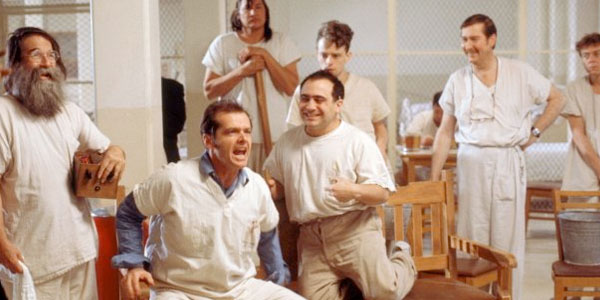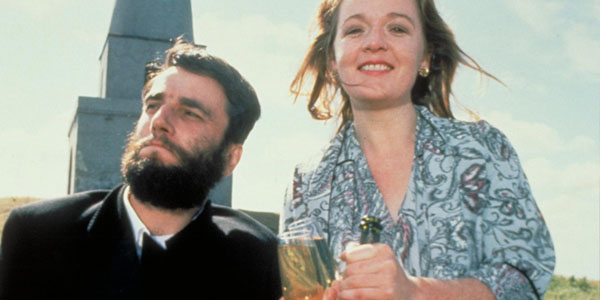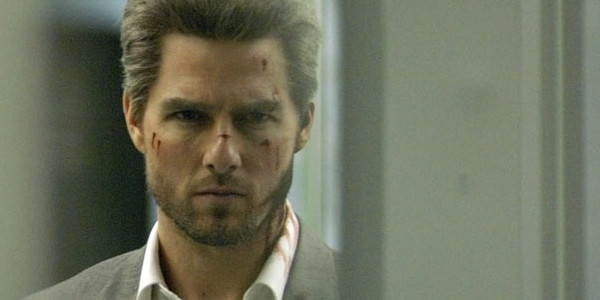I thought I would share this article I found from 'whatculture' website. If you haven't checked this site out before, do so!! I've lost hours of my life because of the this site.
http://whatculture.com/film/10-seriously-insane-ways-famous-movie-actors-got-into-character.php
I've also always been fascinated by method acting in my film studies and general love of cinema. I also find it funny that in my general knowledge, it seems that male actors in particular have gravitated towards this more than female actors. I wonder why.
I was aware of most of these, but there were a couple on the list I already know. There are plenty of other examples as well.
10. Daniel Day-Lewis – My Left Foot
You could easily write an entire list for the extreme ways in which Daniel Day-Lewis prepares for his roles in films, but let’s just get him out the way early shall we? So you have Bill the Butcher from Gangs of New York, in which Day-Lewis trained to be an actual butcher and refused to wear coats in the height of winter on set as it wasn’t in keeping with his character. He also supposedly demanded that everyone refer to him as Mr. President for the recent Lincoln and refused to break character whilst on set.
Then there is his most extreme and possibly most famous example of his extreme measures. It came about for the filming of the 1989 film My Left Foot in which Lewis played Christy Brown, a cerebral palsy sufferer who can only control one limb – his left foot.
To prepare, Day-Lewis (allegedly) refused to leave his wheelchair, demanded that he be force fed and broke to his ribs from remaining hunched over for too long a time, refusing to break character to fully understand the effects of the affliction Christy Brown endured.
This is probably the most famous example of insane ways actors get under their fictional/factual counter parts’ skin, yet with three Oscars to his name for best actor (the only actor to ever obtain such), the man must be doing something right.
9. Heath Ledger – The Dark Knight
It really is hard to believe, but when Christopher Nolan announced he had cast Heath Ledger in the Joker role for The Dark Knight, fan boys were up in arms. Known prior to it for playing pretty boy roles (a Knights Tale, 10 Things I hate About You) and the tortured souls (Brokeback Mountain, Monsters Ball), offering him the role of the Clown Prince couldn’t have been more off the mark. Or at least, so the world initially thought.
Heath Ledger locked himself in a hotel room, isolated himself from the outside world (including his own family) took prescription drugs by the bucket load and descended into a complete personal hell in order to really encapsulate the anarchy that comes with playing The Joker.
Ledger told reporters he “slept an average of two hours a night” while playing “a psychopathic, mass-murdering, schizophrenic clown with zero empathy. I couldn’t stop thinking. My body was exhausted, and my mind was still going.”
“Prescription drugs didn’t help.” he also added.
After tragically dying from a combination of said prescription drugs and exhaustion, the former Joker, Jack Nicholson, infamously stated he knew the reason for his Ledger’s demise. “Well, I warned him.” – Cryptic and ill timed it may have been, but unfortunately for the world, it is a statement that wasn’t too far from the truth about the dangers of actors losing themselves in the dark world of method acting.
8. Christian Bale – The Machinist
There is method acting or getting into character, and then there is risking your life to evoke a sickening, harrowing feeling with an audience. Christian Bale’s character Trevor Reznik is one of the most memorable film performances for decidedly shocking and incorrect reasons.
The film itself is fantastic, a dark portrayal of a man losing his mind due to insomnia is worthy of any film lovers collection. But the staggering look of Bale can, for some, make it almost unwatchable. Bale went all the way down to 110 pounds (7 stone) for the role, supposedly living off a cup of black coffee, a can of tuna and an apple as his daily diet. The producers stepped in after Bale stated he wanted to lose more and reach 100 pounds, yet fearing for his health, they simply told him that it wasn’t a good idea.
Bale also took up smoking to curb his appetite, all equalling a very bad advert for healthy living, yet the results are a skeletal Bale who acts out of his saggy skin to make the role so believable. The film itself obtained critical acclaim, yet the dramatic weight loss shuns any spotlight on how good the film and its story actually are. Still, when a 30 year old man weights the same as an average 8 year old girl, it really is hard to look anywhere else.
7. Robert De Niro – Taxi Driver
De Niro lived and trained with Jake Le Motta for Raging Bull and Le Motta stated that he became so good at boxing that he could probably switch professions. But you probably all know about that one.
A much more extreme method of getting into character is actually changing your job to suit the role you were about to play. Taxi Driver is as much about driving a car around New York as The Godfather is about guns - there is much more depth to it than that. But old Bobby became a New York Cabbie none the less, to understand the clientèle that a taxi driver endured he obtained a provisional license and did pick ups for a few weeks.
New York in 70′s was a very different place to what it is now. Before the Bloomberg clean up, it was widely reported in the 70′s to be a much more hostile, dirty and frightening place to be due to rising crime levels and unsafe living conditions, a feeling that Taxi Driver really encapsulates. De Niro could have easily been attacked or robbed as many NYC cabbies were back then, yet by actually partaking in the job he was attempting to replicate, it is a real testament to Robert De Niro’s craft as an actor.
6. Tom Cruise – Collateral
You are the most famous movie star working today, your films still manage to top the box office irrespective of quality and you have one of the most recognizable faces in the world. So how do you hide your face to become a generic, unrecognizable everyman?
With the help of an aging beard and different hair cut to make his look totally unlike anything he had done before, Cruise attempted to ‘blend’ into the role of a hitman Vincent in Michael Mann’s Collateral. Playing a man who stalks his victims and takes them out without looking any different than your average Joe is role that Cruise went one step further to achieve.
For a few months before shooting, he worked in LA as a FedEx delivery man, attempting to float into normality by delivering packages around bustling Los Angeles to become anything but the most famous movie star on the planet.
Cruise spoke about the experience stating “I got my mission; go in and deliver this package to this place. Then go to this area, buy a coffee and sit down and just talk. It was just a great acting exercise. I’m a very good stalker now too, which is excellent.”
5. Marlon Brando – The Men

No list about getting into character in extreme ways or method acting would be complete, or worth a grain of salt, without featuring the Granddaddy of method; Marlon Brando.
For the 1950 anti war film ‘The Men’, Brando played a paralyzed war vet who tries to adjust to the world without the use of his limbs. This was his onscreen debut that treated the world to the birth of a star with an incredibly realistic performance of such a harrowing, anti war sentiment laden film. At the time, this kind of film was a shocking watch.
An acting student of Lee Strasberg, the revolutionary founding father of method acting (who also trained Paul Newman, Robert De Niro, Al Pacino, James Dean, Dustin Hoffman and Jack Nicholson to name a few), Brando popularized ‘the method’ in the 50’s and went on to use it throughout his career, forever the cornerstone and epitome of being at one with your character.
For this his first film, he prepared for it by reportedly lying in bed for a month in a veterans’ hospital. Immobilized and unable to look himself, Brando started a trend that has since stretched itself out across the very best of the acting world.
4. Johnny Depp – Fear and Loathing in Las Vegas

According to legendary film folklore, Johnny Depp approached Hunter S Thompson before filming Fear and Loathing, asking him if he wouldn’t mind if he lived with him for a while, shadowing his every move and becoming life long friends in the process. Thompson agreed, told him to live in his basement for the foreseeable, but under no circumstances smoke any cigarettes down there.
Depp agreed, yet found it odd that Hunter S Thompson, a man renowned for hard drugs use, crazy antics and most aptly, chain smoking asked him to avoid smoking cigarettes in his basement. Depp decided to sit down on a rickety old chair and spark up anyway.
After a few tokes of his cigarette, he noticed that the ash tray he was using (and the man-made seat he was perched in) was nothing but stacks of dynamite. He screamed for Thompson to come down to his basement and confirm whether or not it was real dynamite. Thompson replied that Depp ‘Could have blown us all to bits!’ Smoking does indeed kill, but not if you live as dangerously as Thompson, it would appear that he has much more exotic ways of kicking the bucket.
After his ill timed suicide in 2005, Johnny Depp bank rolled Thompsons life long request to have his ashes shot out of a cannon – A truly explosive friendship from start to finish and one that is proof that sometimes life truly is stranger than fiction.
3. Dustin Hoffman – Marathon Man

Probably one of the most famous lines uttered by the legendary Laurence Olivier was not one spoken in one of his many great roles, but the supposed quip he aimed at Dustin Hoffman of the back of him training to play Babe in the 1976 film Marathon Man.
The story goes that a history student obsessed with running gets placed unintentionally into a nightmare world of international conspiracy involving some stolen diamonds, an exiled Nazi (Olivier) and a really bad trip to the dentist. I know, right? Crazy. The words ‘Is it safe?’ will forever reverberate in your mind when you visit the dentist after this film.
Hoffman, a method actor by trade, got so prepared for the character he played that he lost 15 pounds after running up to four miles a day to get in shape for the demanding role. Legendary Producer Robert Evans claimed that Hoffman would never come into a scene faking the heavy breathing required, and that he would simply run half a mile right before director John Schlesinger yelled ‘action’ to make the scene more believable. This is something that supposedly led to the famous line Olivier fired at him; ‘Why not try acting? It is much easier.’ A moment in cinematic history that Hoffman vigorously denies.
But why would you admit it? One of the greatest character actors of all time destroyed the supposed ‘method’ acting in favour for his preferred way of just pretending to be someone else with one single, now infamous, line. Either way, both performances are solidified as two of the best to come out the 1970′s.
2. Adrian Brody – The Pianist

Adrien Brody is a man who has suffered for his art. He is also a man, whose fall from grace is one of the biggest on the Hollywood timeline, being the youngest person to win an Oscar for Best Actor for his fantastic portrayal in Roman Polanski’s The Pianist, only to now slump in a swarm of mediocrity and poor film choices.
To prepare for the role of Wladyslaw Szpillman, and in order to feel more connected with the feeling of loss he felt the role required, Brody sold his possessions and moved away before the production of the film.
“I gave up my apartment, I sold my car, I disconnected the phones, and I left,” he says. “I took two bags and my keyboard and moved to Europe.”
His humble outlook towards the role he played, along with the need for the film world to see him at the top of his game is warranted in his sentiments towards the experience:
“The beauty of what I do is it gives you the opportunity to give up who you are and attempt to understand someone else, another time, other struggles, other emotions. If you really do experience a lot of them, you connect and it’s very rewarding.”
Brody’s disconnection with his material life style, is the best example of the positive moral reasons that more actors should partake in this ‘method in the madness’ theory of acting.
1. The Entire Cast – One Flew Over the Cuckoos Nest

Strange one this, with the exception of it’s main star, Jack Nicholson, the cast of One Flew Over committed themselves to a psychiatric ward to get into character for the 1975 Oscar littered film. One of the strongest points to this film is the superfluous acting of the supporting cast that includes Danny DeVito, Christopher Lloyd and Brad Diouf.
When you concentrate on the message of the film, it really hammers home the reason these actors divulged in such a method and why Nicholson avoided it. Nicholson is playing the guy who isn’t at all mentally ill, a man who by his own admissions doesn’t need mental help, and who is simply there to get out of work in jail. For that reason, he did not commit himself and thus isolated his connection to the others who were portraying mentally ill patients.
You can see how much of an effect this had on the stars of the film by watching the making of documentary that comes along with the DVD/Blu Ray version of the film. They claim that there wasn’t any acting on show here and that by committing themselves to be a mental asylum, it is nothing but real. We see a distant Sydney Lassick (who plays one of the most interesting fore fronting characters in Cheswick) looking out the window of the mental institute and contemplating his own life and what it means to be institutionalized. His distant look and far away speech simply shows how close he has come to the edge and echoes what the very film tries to portray: In the battle for freedom, does conforming to authority make one more insane, or is it the freedom of expression that sets you free?










